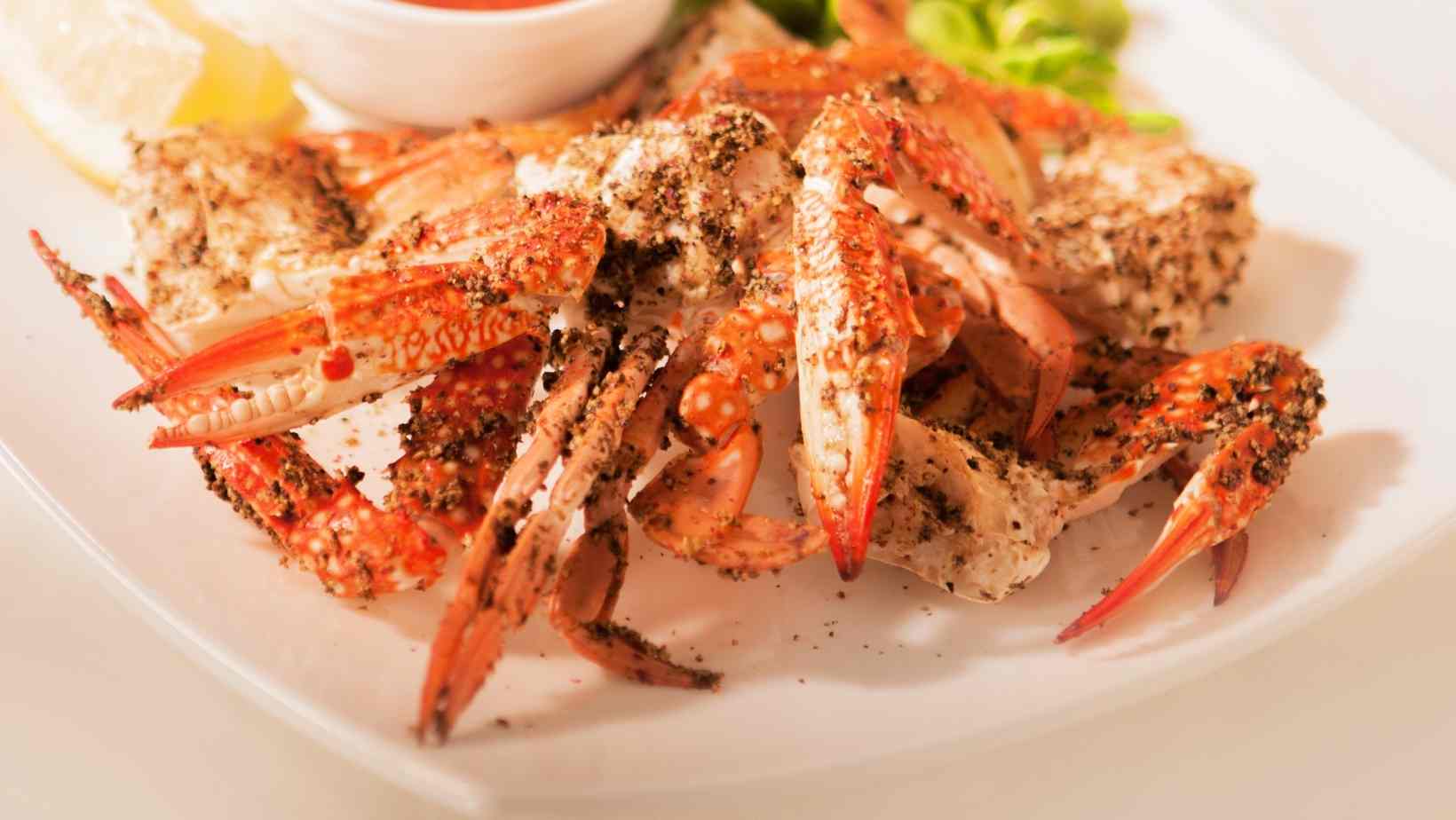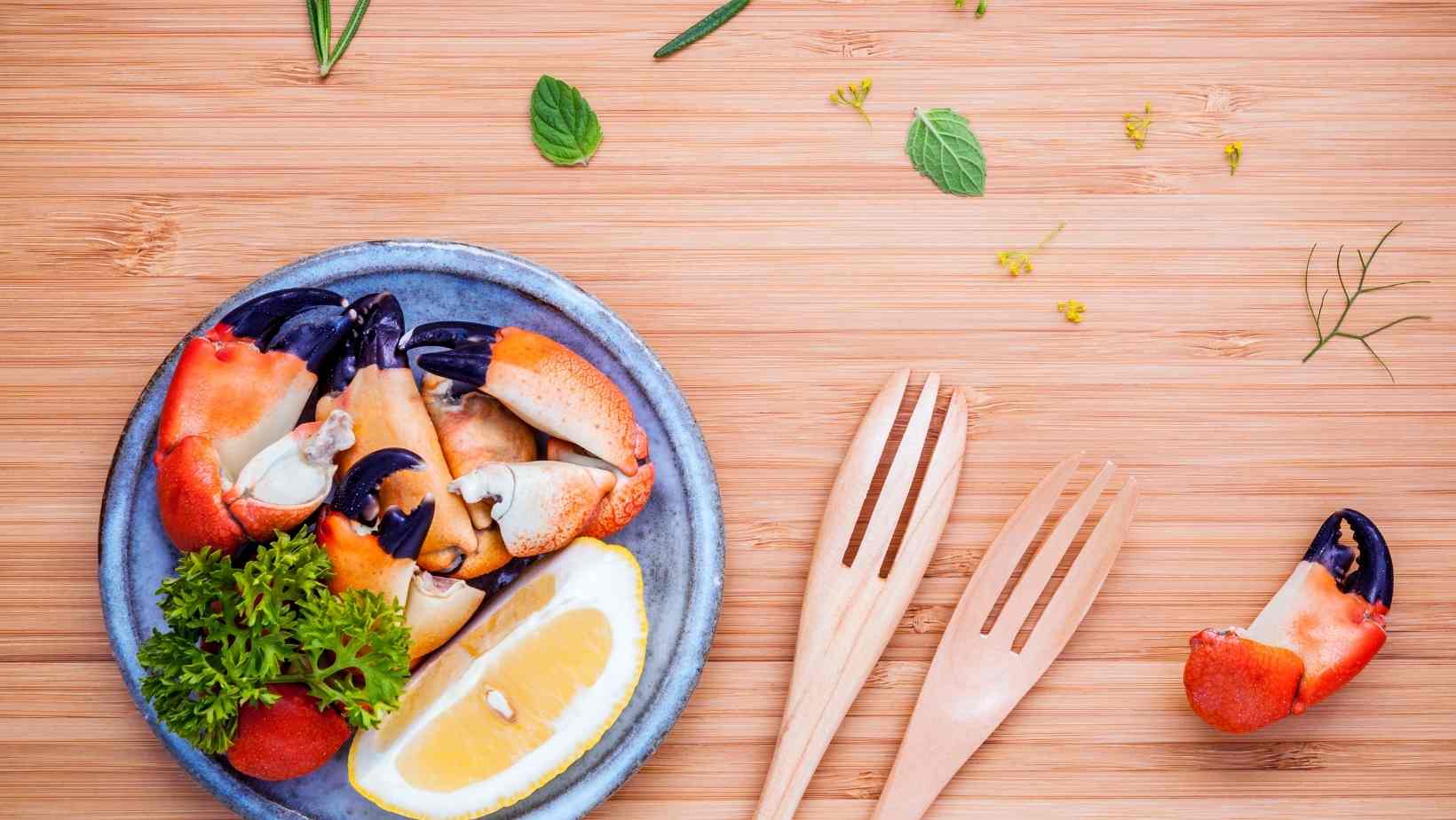For those fortunate enough to live in the Maryland-Pennsylvania area, sharing steamed crabs with friends has long been a social custom. Many methods for extracting the delicate sweet meat from a crab have been perfected, and each individual believes his or her method is the best. Furthermore, some people choose to avoid removing the meat from all available (but difficult to reach) nicks and crannies of the crustacean in favor of getting every morsel of meat and "mustard" from a crab.

This article will provide you with a step-by-step guide to how to eat crabs like a local Baltimorean, as well as tips on how to get all of the edible parts of a Blue Crab.
Preparing the Table
If you're going to eat crabs at home, you'll need to set the table and gather the essential supplies. We recommend covering the table with a plastic tablecloth, followed by a couple of layers of old newspaper or a sheet of butcher paper. (A decent Carryout Crab House will sell butcher paper rolls, and it's a good idea to get one for yourself.) The paper absorbs the majority of the crab juice, making cleanup a breeze. (An alternative is to arrange the leftover shells in bowls rather than straight on the paper.) Simply dump the contents of a bowl into a paper bag when it becomes full. This speeds up the cleanup.)
Tools
A tiny knife is an excellent tool to have on hand. A crab mallet may also be useful for cracking up the claws. You're all set if you have something cold to drink.
Etiquette
If a mound of crabs is placed on a table for numerous people to share, you should obey the "house rules." In other cases, the unstated rule is that the crab you touch first should be picked up and eaten. In other cases, it may be acceptable to pick up a few crabs and then choose the one you want, which is usually the heaviest for its size.
Getting the Crab Open
Remove the crab's apron and throw it away. Pull the shell off using your thumbs or one hand holding one side of the legs and the other hand holding the shell. Grasp the claws one by one and pull them away from the crab (save them to eat in just a bit). Then take each leg off. You can then break each leg open above and below the middle joint afterward. Remove and eat the chunk of meat by squeezing it or using the little knife. This may not be worth the effort for small crabs, but for larger, heavier crabs, you will be rewarded with more meat.

Examine the Meat
Is it safe to eat the crab? Do not eat the crab once it has been opened, if there is a foul order, or if the meat is mushy. A crab with a foul odor or mushy meat was usually deceased before it was cooked. It's possible that eating such a crab will give you gastrointestinal troubles. If you're not sure, it's preferable to throw the crab away entirely. This is why you should not open the claws or legs and eat the meat before this phase. If the crab's insides are poor, you should also get rid of its claws and legs.
Mustard
Do you consume the Mustard of the crab? The crab's Mustard is considered a delicacy by most crab eaters. Some individuals believe that the yellowish fluid located in the center of the inner crab and concealing in the tips of the shell is fat. The hepatopancreas, a component of the crustacean's digestive system, is an organ found solely in crabs and lobsters.
Toxins from contaminated water can build up in this organ. For this reason, and to be on the safe side, crab mustard should be avoided by women of childbearing age, especially those who are pregnant, and children under the age of five.
Note that all crabs supplied to Cravin' Crabs are harvested from non-polluted waters.
Remove the "Devil"
The crab's lungs are this stringy, bitter-tasting material. It is a fallacy that eating the "devil" makes you sick; the lungs just have an awful flavor. Simply pinch it with your fingers or scrape it away with a knife.
The Main Body
The meat of the crab can be exposed in a variety of ways. Our method is cutting the left and right pieces at a 45-degree angle using a knife. As a result, there will be one large portion (the bottom) and two little sections chopped away. The chambers housing the meat are plainly visible using this procedure. Use your fingers to withdraw the meat, or carefully slip the blade of a small knife into each chamber, keeping it near to one of the chamber's side fins. Give the knife a slight twist once the blade is fully inserted, then remove and devour the meat. Carry on in a similar manner for each chamber.
Claws
Don't forget to eat the claws as well. Breaking the lower jaw and pulling it out is the first step in opening a claw. It's possible that the meat will come out. There is a fin in the middle, but you may scrape the meat from it with your teeth. The meat will usually remain in the claw, so you'll have to break it open. A claw is made up of two halves, which you should snap apart. Each of the two components can be broken apart using a mallet. However, placing your knife on the claw and hitting it with a mallet or the palm of your hand is a superior technique. All you have to do is break or cut a small hole in the shell. Then, with a twist of your knife, the claw's shell will open.
That concludes the discussion. Opening and thoroughly cleaning a cooked crab will take some practice, but most people like this type of practice!
P.S. A dozen or two steam crabs and a dozen steamed corn ears make a delicious nutritious carry-out dinner! Simply place your order before leaving work, and it will be waiting for you on your way home. With a side of delectable shrimp salad, you'll have a lunch to remember!




